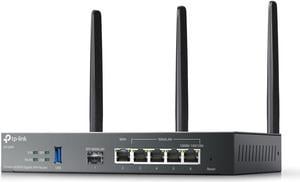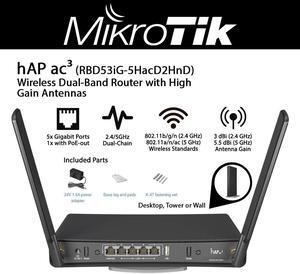- Home
- Networking
- Wired Networking
- Firewall & Network Security Devices
Firewall & Network Security Devices
- In Stock
- Sold by Newegg
- Make an Offer
- New
- Brands
- Show More
- Price
- Show More
- Type
- Ports
- Show More
- VPN
- WAN Ports
- LAN Ports
- Maximum Users
- Form Factor
- Simultaneous Sessions
- Show More
- All Top Brands
- Availability
- Condition
- Current Promotion
- Discount
- Sold by
- Useful Links
- New
Show More
- Customer Ratings
- & up

- WAN Ports: (1) GbE RJ45 port (1) 10G SFP+ port
- LAN Ports: (8) GbE RJ45 ports (1) 10G SFP+ port
- Brand: Ubiquiti Networks
- Series: Gateway
- Model #: UDM-Pro
- $389.99 –
- More options from $389.99 - $462.73
- Free Shipping

- Security: Stateful Firewall Application-Aware Layer 7 Firewall DPI & Traffic Identification Content Filtering Ad Blocking
- Brand: Ubiquiti Networks
- Part Number: UX
- Type: Wired + Wireless
- Model #: UX-US
- $149.00 –
- More options from $109.99 - $189.66
- $1.99 Shipping

- LAN Ports: LAN: (4) GbE RJ45 ports WAN: (1) 1/2.5 GbE RJ45 port
- Brand: Ubiquiti Networks
- Series: Gateway
- Part Number: UCG-Ultra
- Model #: UCG-Ultra
- $129.00 –
- More options from $104.11 - $161.31
- $4.99 Shipping

- WAN Ports: 1 x 10Gbps, 1 x 2.5Gbps
- LAN Ports: 1 x 10Gbps, 8 x 1Gbps
- Brand: Ubiquiti Networks
- Series: Gateway
- Model #: UDM-SE
- $498.00 –
- More options from $498.00 - $634.99
- Free Shipping

- WAN Ports: (1) 2.5 GbE RJ45 port (1) 10G SFP+ port
- LAN Ports: (8) GbE RJ45 ports (1) 10G SFP+ port
- Brand: Ubiquiti Networks
- Series: Gateways
- Model #: UDM-Pro-Max
- $599.00 –
- More options from $599.00 - $912.89
- Free Shipping
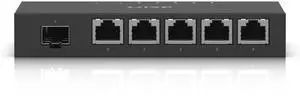
- LAN Ports: (5) 10/100/1000 RJ45 ports (1) 100/1000 SFP port
- Protocols: TCP/IP
- Security: ACL-Based Firewall Zone-Based Firewall NAT
- Brand: Ubiquiti Networks
- Model #: ER-X-SFP
- $99.00 –
- More options from $99.00 - $125.00
- $3.99 Shipping
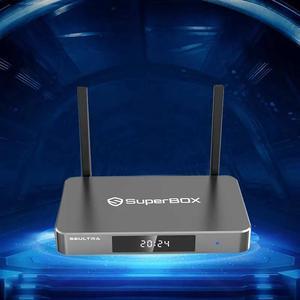
Limited time offer, ends 08/18
- Processor: Quad-core ARM Cortex-A53
- Power Input: DC 5V/2A
- Features: Time Shifting Parent Control 4GB+128GB Android 12.0 Biult-in Voice Command Playback Ultra High Definition Dual Band Wi-Fi Bluetooth Remote
- Dimensions: 7.48IN*5.12IN*2.95IN
- Model #: S6 ULTRA
- $399.00 –
- Free Shipping

- WAN Ports: (1) 1/2.5 GbE RJ45 port
- LAN Ports: (4) 1/2.5 GbE RJ45 ports
- Brand: Ubiquiti Networks
- Series: Gateway
- Model #: UCG-Max
- $279.00 –
- More options from $269.99 - $342.72
- Free Shipping

- Protocols: BGP, OSPF, RIPv1/v2, static routes, policy-based routing
- Security: Deep Packet Inspection services: Gateway Anti-Virus, Anti-Spyware, Intrusion Prevention, DPI SSL Content Filtering Service (CFS): HTTP URL, HTTPS IP, keyword and content scanning, Comprehensive filtering based on file types such as ActiveX, Java, Cookies for privacy, allow/forbid lists Comprehensive Anti-Spam Service Application Visualization Application Control Capture Advanced Threat Protection
- Brand: SONICWALL
- Series: TZ270 Series
- Model #: 02-SSC-6447
- $395.00
- See price in cart
- More options from $295.99 - $448.08
- Free Shipping

- Brand: Ubiquiti Networks
- Part Number: UXG-MAX
- Network Management Type: Managed
- Primary Ports: 5 x RJ45
- Model #: UXG-Max
- $199.00 –
- More options from $199.00 - $245.32
- Free Shipping
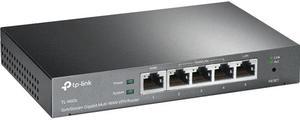
- WAN Ports: 1 x Fixed Gigabit WAN Port
- LAN Ports: 3 x Changeable Gigabit WAN/LAN Ports
- Protocols: TCP/IP, DHCP, ICMP, NAT, PPPoE, NTP, HTTP, HTTPS, DNS, IPSec, PPTP, L2TP, OpenVPN, SNMP
- Brand: TP-Link
- Model #: TL-ER605
- $59.99 –
- More options from $48.87 - $122.86
- Free Shipping
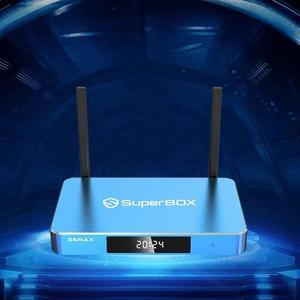
Limited time offer, ends 08/18
- Processor: Quad-core ARM Cortex-A53
- Power Input: DC 5V/2A
- Features: Time Shifting Parent Control Android 12.0 Biult-in Voice Command Playback Ultra High Definition Dual Band Wi-Fi Bluetooth Remote
- Dimensions: 7.48IN*5.12IN*2.95IN
- Model #: S6 MAX
- $359.00 –
- Free Shipping
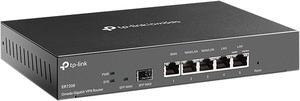
- WAN Ports: 1 x Fixed Gigabit SFP WAN Port 1 x Fixed Gigabit RJ45 WAN Port
- LAN Ports: 2 x Fixed Gigabit RJ45 LAN Ports 2 x Changeable Gigabit RJ45 WAN/LAN Ports
- Security: SPI Firewall VPN Passthrough FTP/H.323/PPTP/SIP/ IPsec ALG DoS Defence, Ping of Death Local Management
- Brand: TP-Link
- Model #: ER7206 (TL-ER7206)
- $139.99 –
- More options from $120.44 - $194.99
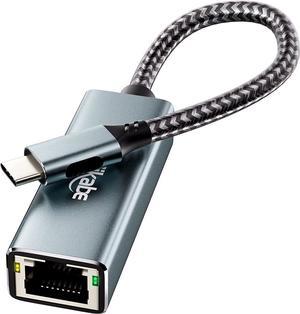
- Model #: SOYE682827802656WEI
- $19.44 –
- Free Shipping
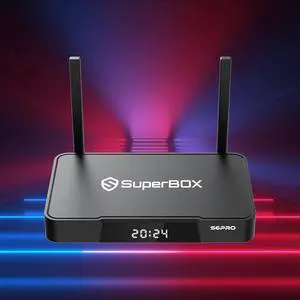
Limited time offer, ends 08/18
- Processor: Quad-core ARM Cortex-A53
- Power Input: DC 5C/2A
- Features: Time Shifting Parent Control Android 12.0 Biult-in Voice Command Playback Ultra High Definition Dual Band Wi-Fi Bluetooth Remote
- Dimensions: 7.48IN*5.12IN*2.95IN
- Model #: S6 PRO
- $329.00 –
- Free Shipping
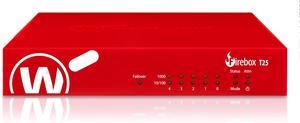
- Brand: WatchGuard
- Type: Wired + Wireless
- Ports: Interfaces 10/100/1000: 5 I/O interfaces: 1 Serial/2 USB Concurrent connections: 1,300,000 Concurrent connections (Proxy): 1,300,000 New connections per second: 16,000 VLANs: 10 WSM licenses (incl): 0 TDR Host Sensors included: 5
- Simultaneous Sessions: 1300000
- Model #: WGT25003
- $529.74 –
- More options from $529.74 - $617.53
- Free Shipping
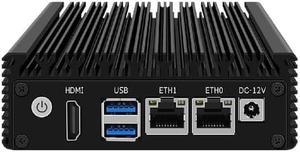
- Firewall Type: Desktop Type
- Type: Wired
- Throughput: < 1Gbps
- LAN Ports: 2 x RJ-45
- Model #: NRJ13-N3050-232
- $213.99 –
- Free Shipping

- Brand: Ubiquiti
- Series: CloudKey
- Processor: Octa-core Arm® Cortex®-A53 based chip
- Features: Management interface: Ethernet Bluetooth Networking interface: (1) GbE RJ45 port Memory: 32 GB eMMC 3 GB RAM SSD capacity: 1 TB 2.5" SATA SSD (user-upgradeable*) *CloudKey+ only supports drives that can operate on 5V power. Drives that require additional power are not supported. Power method: PoE Quick charge 2.0/3.0 power adapter, 9V DC, 2A Max. power consumption 9.6W Display 1.42" gray-scale OLED LEDs: (1) Power: white/blue Buttons: (1) Power (1) Factory reset Ambient operating temperature: 0 to 35° C (32 to 104° F) Ambient operating humidity: 20 to 80% noncondensing Certifications: FCC, CE, IC Capacity HD cameras: 24 2K cameras: 14 4K cameras: 8 *Assumes the UCK-G2-PLUS is dedicated to UniFi Prot...
- Model #: UCK-G2-SSD
- $249.00 –
- More options from $249.00 - $307.93
- Free Shipping

- LAN Ports: 3 x 10/100/1000 RJ45 Ports 1 x 1 Gbps SFP Port
- Brand: Ubiquiti
- Part Number: UBI-ER-4-US
- Speed: 10/100/1000Mbps
- Model #: ER-4-US
- $189.47 –
- More options from $169.99 - $236.25
- $12.99 Shipping

- Model #: 38085357699266
- $299.99
- See price in cart
- Free Shipping

- Specifications: Product Type: SFP+ Interface Type: 1000Base-LX Number of Ports/Channels: 1 Data Transfer Rate: 1 Gbps Gigabit Ethernet Application/Usage: Data Networking Optical Network Interfaces/Ports: 1 x 1000Base-LX Interfaces/Ports Details: 1 x 1000Base-LX Network Connectivity Media: Optical Fiber 1000Base-LX
- Model #: 01-SSC-9790
- $150.98
- $150.00 –
- More options from $150.00 - $185.45
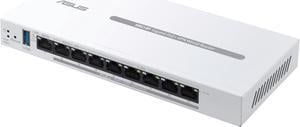
- WAN Ports: Gigabit WAN Port x 1
- LAN Ports: Gigabit LAN Port x 8 (Changable WAN/LAN Port x 2)
- Security: AiProtection VPN Let's Encrypt DNS-over-TLS SSH Firewall • Maximum Firewall Keyword Filter :64 • Maximum Firewall Network Service Filter :32 • Maximum Firewall URL Filter : 64
- Brand: ASUS
- Model #: EBG19P
- $191.81 –
- More options from $179.22 - $226.28
- Free Shipping
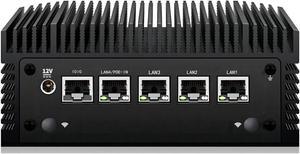
- Type: Wired + Wireless
- Ports: USB, COM
- OS Support: pfsense, windows
- LAN Ports: 4 x RJ-45
- Model #: Net-N1008128
- $359.00 –
- Free Shipping
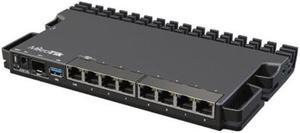
- $217.00 –
- More options from $217.00 - $489.00
- Free Shipping
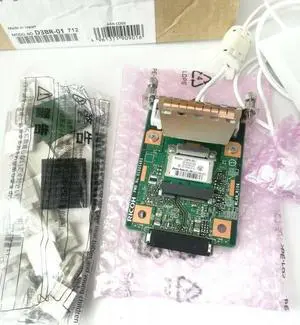
- Model #: B03H2ZXC0
- $369.99 –
- Free Shipping

- Firewall Type: Cabinet Type
- Model #: 03-SSC-1371
- $1,270.80
- Request Price
- More options from $1,162.99 - $1,750.99
- Free Shipping

- Protocols: BGP, OSPF, RIPv1/v2, static routes, policy-based routing
- Security: Security Services Deep Packet Inspection services: Gateway Anti-Virus, Anti-Spyware, Intrusion Prevention, DPI SSL Content Filtering Service (CFS): HTTP URL, HTTPS IP, keyword and content scanning, Comprehensive filtering based on file types such as ActiveX, Java, Cookies for privacy, allow/forbid lists Comprehensive Anti-Spam Service Application Visualization Application Control Capture Advanced Threat Protection
- Brand: SONICWALL
- Series: TZ 470
- Model #: 02-SSC-6798
- $1,906.42
- Request Price
- More options from $1,873.45 - $2,605.67
- Free Shipping

- Protocols: BGP, OSPF, RIPv1/v2, static routes, policy-based routing
- Security: Security Services Deep Packet Inspection services: Gateway Anti-Virus, Anti-Spyware, Intrusion Prevention, DPI SSL Content Filtering Service (CFS): HTTP URL, HTTPS IP, keyword and content scanning, Comprehensive filtering based on file types such as ActiveX, Java, Cookies for privacy, allow/forbid lists Comprehensive Anti-Spam Service Application Visualization Application Control Capture Advanced Threat Protection
- Brand: SONICWALL
- Series: TZ 470
- Model #: 02SSC2829
- $839.20
- Request Price
- More options from $769.99 - $1,163.99
- Free Shipping

- Brand: WatchGuard
- Type: Wired + Wireless
- Ports: 1 Serial/2 USB
- Simultaneous Sessions: 3800000
- Model #: WGT85033US
- $2,550.99 –
- More options from $2,550.99 - $2,972.63
- Free Shipping

- Protocols: BGP, OSPF, RIPv1/v2, static routes, policy-based routing
- Security: Security Services Deep Packet Inspection services: Gateway Anti-Virus, Anti-Spyware, Intrusion Prevention, DPI SSL Content Filtering Service (CFS): HTTP URL, HTTPS IP, keyword and content scanning, Comprehensive filtering based on file types such as ActiveX, Java, Cookies for privacy, allow/forbid lists Comprehensive Anti-Spam Service Application Visualization Application Control Capture Advanced Threat Protection
- Brand: SONICWALL
- Series: TZ 570
- Model #: 03-SSC-3018
- $3,233.26 –
- More options from $3,233.26 - $3,582.00
- Free Shipping

- WAN Ports: 1 x 10G/Multi-gigabit Copper (Configurable LAN/WAN) 1 x 2.5G/1G RJ-45 (WAN)
- LAN Ports: 3 x 2.5G/1G RJ-45 (LAN) 1 x 10G/1G SFP+ (LAN)
- Brand: NETGEAR
- Speed: 10GbE
- Model #: PR60X-100NAS
- $699.99
- See price in cart
- Free Shipping

- WAN Ports: 1 x Fixed Gigabit SFP WAN Port 1 x Fixed Gigabit RJ45 WAN Port
- LAN Ports: 2 x Fixed Gigabit RJ45 LAN Ports 2 x Changeable Gigabit RJ45 WAN/LAN Ports
- Protocols: TCP/IP, DHCP, ICMP, NAT, PPPoE, NTP, HTTP, HTTPS, DNS, IPSec, PPTP, L2TP, OpenVPN, SNMP
- Security: SPI Firewall VPN Passthrough FTP/H.323/PPTP/SIP/ IPsec ALG DoS Defence, Ping of Death Local Management
- Model #: ER7206
- $139.99 –
- More options from $139.99 - $199.99
- Free Shipping
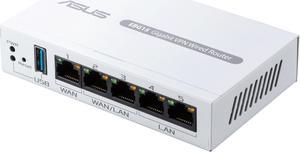
- WAN Ports: 1 x 10/100/1000Mbps
- LAN Ports: 4 x 10/100/1000Mbps (2 x Changable WAN/LAN Port)
- Brand: ASUS
- Series: ExpertWiFi
- Model #: EBG15
- $119.99
- $89.99 –
- Save: 25%
- More options from $89.99 - $142.24
- Free Shipping
Firewall & Network Security Devices – Gateways, UTM, VPN
Protect and Segment Your Network
Build a secure edge that blocks threats, enforces policy, and supports remote work. Start by shop firewalls & security, then add the right access and switching layers for your layout—whether that’s wireless routers, LAN switches, or WAN termination via modems & gateways.
For uplinks and backbones, many deployments rely on fiber. If that’s you, check compatible SFP/SFP+ transceivers and ensure cabling quality with Ethernet cables. On the access layer, plan reliable Wi-Fi using ceiling-mounted access points or a whole-home topology using Mesh Wi-Fi. For neat installs and proper airflow, mount gear in server racks & cabinets.
Budgeting a rollout? Watch for seasonal promos and bundles under networking deals to stretch spend while maintaining security baselines.
When to Choose Each Type
- SOHO / Home Lab: Basic IPS/web filtering, simple VPN, and VLANs for user/IoT separation.
- SMB: UTM/NGFW for app control, URL filtering, IPS/IDS; PoE switching for cameras and APs.
- Enterprise / Multi-Site: High-throughput NGFW with HA, SSO/MFA, centralized management, and 10GbE aggregation.
UTM / Next-Gen Firewalls
- All-in-one controls: IPS/IDS, antivirus, web filtering, application visibility
- Size for real-world firewall/IPS/VPN throughput, not just theoretical rates
- Plan license tiers (AV/IPS/WebFilter) and renewal timelines
VPN & WAN Gateways
- Remote-user and site-to-site VPN (SSL/IPsec), with dual-WAN and failover
- Support identity controls (SSO/MFA) and per-app policies
- Use VLANs and ACLs to segment users, servers, and IoT
How to Choose the Right Firewall
When choosing the right firewall, compare its firewall, IPS, and VPN performance under realistic network loads to ensure it meets your needs. Check the maximum number of concurrent VPN users supported and the types of tunnels available, such as SSL or IPsec. Look for 10GbE ports and fiber uplinks, as well as dual-WAN capabilities for redundancy and failover. Review the UTM (Unified Threat Management) bundles and renewal terms to make sure the included security features align with your requirements. Use VLANs to segment traffic between users, servers, security cameras, and IoT devices for better control and security. Finally, consider rack depth, airflow, cable management, and redundant power supplies to ensure reliable, long-term operation.
Benefits of a Dedicated Hardware Firewall
- Stronger perimeter protection than software-only solutions
- Built-in VPN for secure remote work and partner access
- Layered defenses: IPS/IDS, malware filtering, application control
- Simple network segmentation with VLANs and ACLs
- Centralized logging, alerting, and compliance reporting
- Scales from SOHO to enterprise with HA and high-speed uplinks
FAQs: Firewall & Network Security Devices
Do I need a firewall if my router has NAT?
Yes. NAT is address translation, not security. A firewall adds policy, threat prevention, VPN, and audit logging.
What’s the difference between UTM and NGFW?
UTM highlights “all-in-one” security for SMBs, while NGFW emphasizes app awareness and advanced threat prevention. Many devices blend both.
How do I size a firewall for my office?
Match firewall/IPS/VPN throughput to peak traffic, confirm user/VPN counts, and plan dual-WAN plus growth headroom.
What else should I prepare before installation?
Confirm rack space, power and cooling, cable runs, addressing/VLAN plan, identity integration (SSO/MFA), and logging destinations.












